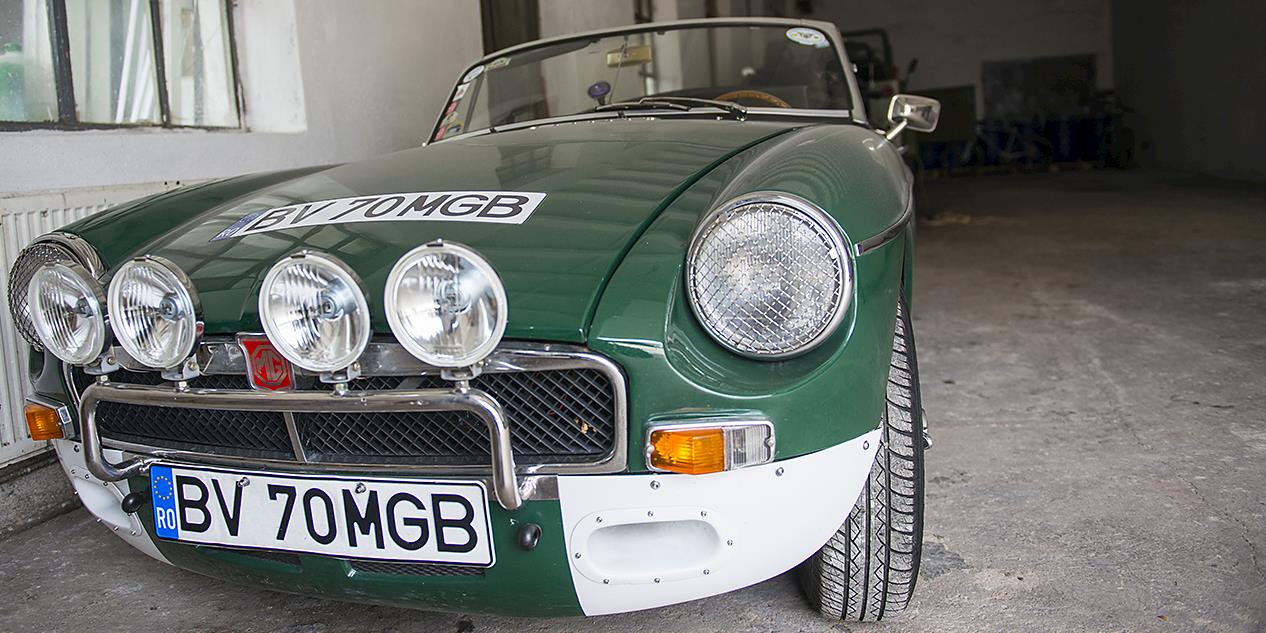A passion for the classics
"Vintage cars were designed from the heart," says Ion Tâmpu from Seco Tools, Romania, a passionate car collector.ION ȚÂMPU, A TECHNICAL REPRESENTATIVE AT SECO TOOLS IN ROMANIA, DILIGENTLY STAYS ON TOP OF NEW TECNHOLOGY, BUT IS ALSO HAPPY TO FALL BACK ON OLD TRADITIONS.
Ion Țâmpu started the Old Cars Club Transilvania vintage car club in 2005. “Our main goal is not to have many members, but enthusiastic ones with classic cars,” he says.
Every year, the club holds a rally event and helps other clubs with similar events.
Vintage car races are not strictly about speed as with other car races, but focus on precision. It’s about pacing the driving, or as Țâmpu says, “Keeping the precise speed to reach targets at the exact time.”
“OLD SCHOOL WORKS!” says Ion Țâmpu, a technical expert who has been providing customers and Seco Tool’s sales team with technical support for the past six years. “You can improve and modernize things with state-of-the-art technology, but it is always helpful to start at the beginning and go back to the basics if something is not working.”
Țâmpu is often on the road, visiting customers and providing support and technical assistance, whether it involves improving cutting processes, juggling with milling parameters, or finding a way to improve productivity. “I’m like a problem solver. I’m there to help and improve the situation for the customer,” he says explaining that he adapts Seco products to the conditions and machines that vary from sector to sector and place to place.
Prior to working at Seco, Țâmpu was a construction engineer for a Canadian steel company. He has also worked in the automotive sector as a mechanical engineer and says the same engineering principles apply regardless of the sector. “The theory is the same. It’s just the various means of applying it that are different.”
Țâmpu thoroughly enjoys being able to apply all of his technical and engineering knowledge to both his current job at Seco and to his hobby, vintage cars. “I was just five-years old when I saw a VW Karmann Ghia sports car and I remember thinking ‘Wow, I like cars!’” he says.
That childhood passion has remained with him ever since, resulting in his founding the “Old Cars Club Transilvania” a vintage car club in his hometown that engages in rallies and other events.

Țâmpu’s description of restoring vintage cars makes it clear that he regards the pastime as a noble mission. “Vintage cars bear the soul of the car designer,” he says. “They were designed with the heart and the mind – not by computers.”
Take the iconic vintage classic, the Volkswagen Beetle: “This was a reliable, good design that is almost impossible to reproduce now,” Țâmpu explains. “Now all cars look and feel exactly the same. Only the emblem is different.”
Țâmpu’s first vintage car was a soft top Beetle. After that, he purchased an East German Trabant. “This was a nice car but it was difficult to maintain in the 1990s because it was hard to find spare parts after the [Romanian] revolution.”
Today, he and his fellow collectors import many of the parts – if they can find them. They also recondition old parts, often finding what they need in car graveyards.
ȚÂMPU CURRENTLY OWNS a Fiat 1800B with a six-cylinder engine and a Renault 16, both from 1967. He frequently takes them out for drives, but otherwise, like most vintage car collectors, he tends to keep a fairly low profile about his hobby. “In the communist regime of the past, vintage car collecting was considered elitist, a hobby for the rich only.”
These days, the attitude is changing says Țâmpu, adding that young people in particular are often fascinated when they see him out and about in his 1967 cars. “They can’t believe that these cars are still working. But really, the basics haven’t changed so much. Cars still have four wheels, an engine, and a steering wheel. You can modernize old cars, but the old-school mentality and methods still work.”